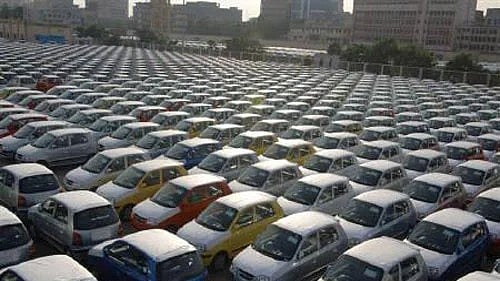
Representative image
Credit: Reuters file photo
Mumbai: India’s automobile industry—the third-largest in the world—could cut its manufacturing emissions by as much as 87 per cent by 2050 through a shift to green electricity and low-carbon steel, according to a new independent study released by the Council on Energy, Environment and Water (CEEW).
The study comes as several leading automakers—such as Mahindra & Mahindra, Tata Motors, TVS Motors, Ford, BMW, Mercedes-Benz, and Toyota—have, over the past two years, ramped up electric and hybrid vehicle production while simultaneously setting ambitious emission reduction targets.
These automakers have also committed to the Science-Based Targets initiative (SBTi), aligning with global definitions of net-zero that require full value-chain decarbonisation by 2050, according to CEEW, a homegrown institution with headquarters in New Delhi — is among the world’s leading climate think tanks.
For large Indian auto manufacturers, cleaning up supply chains will not just lower emissions, it will enhance long-term cost competitiveness and position them as preferred international suppliers, it said.
Dr Arunabha Ghosh, CEO, CEEW, said, “India’s auto industry stands at a turning point. To lead in a low-carbon global economy, we must decarbonise, not just the vehicles we drive but the industrial processes that build them. Automakers must clean up how their vehicles are made, what powers their factories, and how their suppliers produce critical inputs like steel and rubber. This is not new—promisingly, most major manufacturers in India are already thinking about these shifts. Now, the push must be to create demand for green materials at scale, lower costs, and deploy cleaner technologies rapidly. The auto sector can emerge as a force multiplier for economy-wide net-zero transitions—but only through collective foresight, investment and innovation.”
The CEEW study uses a custom version of the Global Change Analysis Model to project emissions from India’s vehicle manufacturing sector under various pathways. It finds that if current business-as-usual (BAU) trends continue, annual vehicle production could rise nearly four-fold—from 25 million units in 2020 to 96 million by 2050. Emissions, however, would only double, reaching 64 million tonnes of CO₂, suggesting a steady decline in emissions per vehicle. Still, the absolute rise in emissions underscores the need for accelerated action. Steel alone would remain the largest source of supply chain emissions, with suppliers expected to rely heavily on coal in this business-as-usual scenario. The study estimates that sourcing low-carbon steel could reduce emissions by nearly 38 million tonnes by 2050.